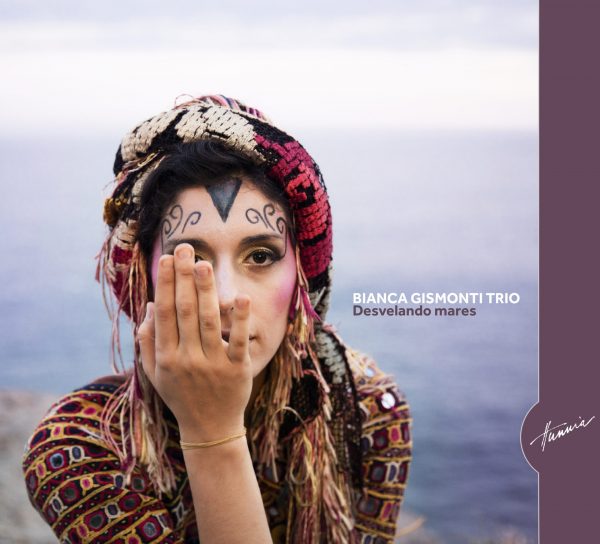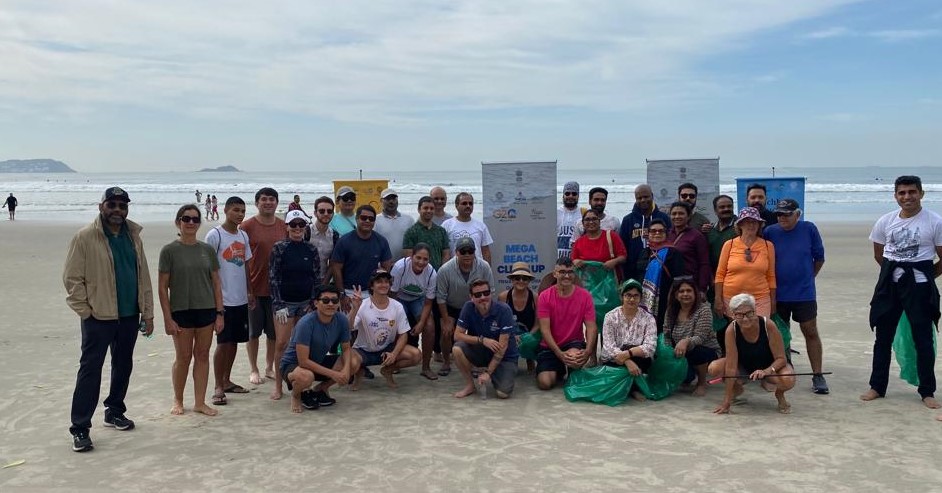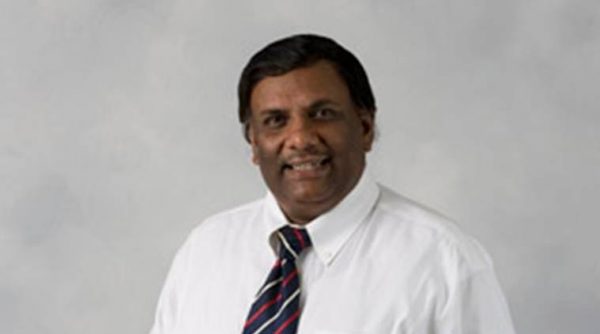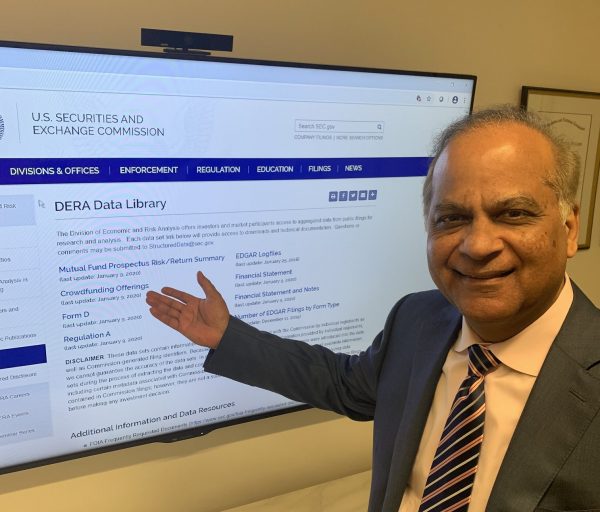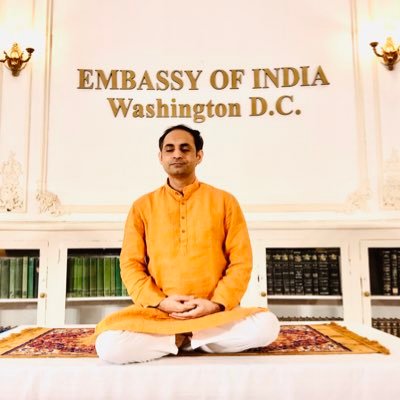The Sangam Project is an online event organized by the Global Music Institute and the cultural center of the Embassy of Brazil in New Delhi
Florencia Costa
In the tradition of Hinduism, Triveni Sangam is sacred: it is the confluence of the rivers Ganges, Yamuna and the mythical Saraswati. A dip there – assure the faithful – is able to cleanse the sins. In November of this year, Rio de Janeiro composer and pianist Bianca Gismonti and Rio Grande do Sul drummer Julio Falavigna presented a beautiful Indo-Brazilian musical confluence over the internet: the Sangam Project. The online event was organized by the Global Music Institute (GMI) and the cultural center of the Brazilian Embassy in New Delhi.
The musical Sangam washed the soul of many in this 2020, a year contaminated by the fear and uncertainty of a virus. The online shows were powered by Brazilian compositions by Bianca, her father, Egberto Gismonti, and other geniuses of Brazilian music, such as Tom Jobim, Vinícius de Moraes, Baden Powel, Milton Nascimento, Fernando Brant, Luiz Gonzaga. The compositions were played by the couple Bianca (on paino) and Julio (on drums and tabla), in addition to other artists of various nationalities, but mainly Indians.
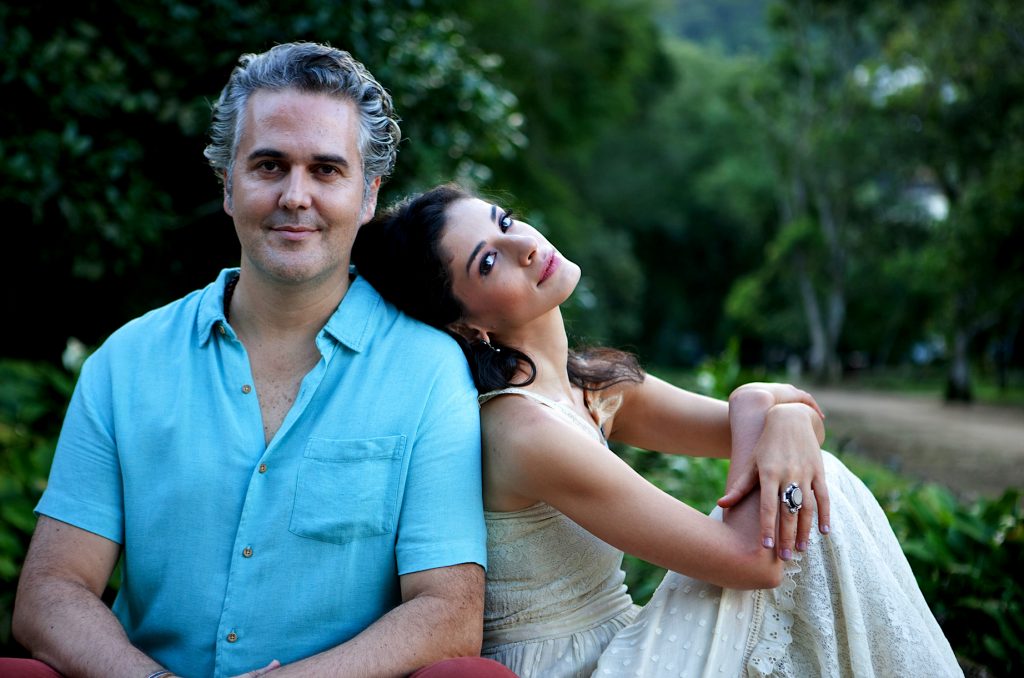
The Sangam project was divided into four episodes named after elements of Brazilian and Indian nature: Surya, Lotus, Cactus and Colibri. In the four episodes there was a mandatory ingredient: the performance of an Indian artist. Like the dishes of Indian cuisine, sprinkled with innumerable spices mixed in a masala, the project tasted the sounds of artists from Cuba, Puerto Rico, France and the United States, who played at various times.
The performances of each artist were recorded in their homes or studios and then edited. GMI, based in New Delhi, is one of the leading music schools in India, founded in 2011 by Aditya and Tarun Balani, with the mission of bringing a modern and distinctive application to music education.
This musical communion, broadcast in November by the GMI’s YouTube channel and by the social networks of the Brazilian Embassy in India, started with the Episode Surya, a Sanskrit word that means sun. “Surya is a reference to a vigorous start”, explained Bianca, in an interview granted to BECO DA INDIA, next to her husband Julio Falavigna, in Rio de Janeiro. Bianca divided the songs according to the names of the episodes chosen by Julio.
In this first episode, the Indian Varijashree Venugopal sings Folia, an amazing experiment. “The Indian singer has a jazz studio. So, she already likes more western music, ”explained Bianca.
Episode number 2 was baptized with another word from the Indian tradition: Lotus, the sacred flower of Hinduism, Buddhism and Jainism. In it, the Indian participation was on account of the violinist based in London Preetha Narayanan, who played Ostinatos. “This episode is the most introspective,” noted Bianca.
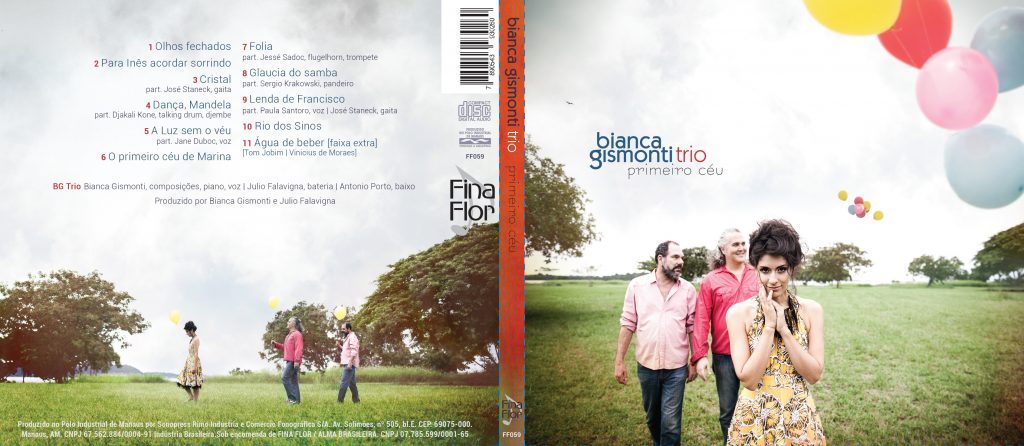
The third episode, called Cactus. With that name, the opening song could not fail to be the classic baião Asa Branca. The Indian spice in this presentation was given by Babar Latif Khan (tabla) and Bittu Mallik (singer). The episode ended with another Indian: the flutist Apurva Seth, who played Where the Birds Plan.
Colibri was the name given to episode number 4, which had the song Homage to Shiva as its golden closure (Homanegam to Shiva, one of the most important Hindu deities and the one most associated with yoga).
The New Coronavirus pandemic caused a turnaround in everyone’s plans and it was no different with Bianca and Julio. They had concerts in India and Europe on their agendas, but they only managed to complete the Indian program in March 2020, when they returned to Brazil so that they could no longer travel. “In March 2020 we played at the Jazz Festival in Jaipur (Rajasthan) and it was incredible. It was just before the lockdown in India. We realize that there are many connections between Brazil and India in the musical field. Indians are very receptive, emotional, warm ”, said Júlio.
“The tour we did this year is impressive, we felt a great identification with the Indians. The Brazilian also has a very spontaneous thing, he has the affection, the joy, the musicality, the way of communicating, the relaxation. Indians react to music with their bodies, dance, vibrate a lot ”, recalled Bianca.

Bianca and Julio had already done a workshop for the Global Music Institute before carrying out the Sangam Project. GMI had a musical project with the Brazilian embassy called “A Alma do Brasil”, with Brazilian musicians. “They wanted to make a project including music from Brazil, India and other countries, and that was how the Sangam Project came about, in July,” says Julio, who chose the name thinking precisely of the musical confluence of the two cultures.
Julio, who plays drums and tabla, among other instruments, says that the Brazilian ambassador in New Delhi, Andre Correa do Lago, has always tried to spread Brazilian music in India a lot. Thus, the idea of showing the interchangeability of the two cultures was natural.
Júlio and Bianca recorded their participation either in the studio they own in Itaipava, in the state of Rio de Janeiro, or in their apartment, in the capital of Rio de Janeiro, often with the participation of Rio pianist Claudia Castelo Branco, with whom Bianca created the Duo Gisbranco. The instrumentalists and singers recorded where they live, whether in Canada, Italy or India. Each received the basis of the music and recorded their part. Then there was sound mixing, video editing, that is, a laboratory process. In the final stage, the videos were sent to the GMI and their technical team did the final treatment before launching on the YouTube channel.
Julio’s ties to India sprang up in the 1990s, when he lived in Europe. At that time, Julius used to travel frequently to India to spend long periods in ashrams (spiritual retreats) of yoga and meditation. “My case with India is almost 30 years old,” he recalls. In Europe, he dedicated himself to music, playing the drums. There, he met one of his teachers of classical Indian music, who taught him to play the tabla. But in Europe, Julius also had the opportunity to dive into the world of meditation and yoga. “All of this created a very strong bond with India,” he said.
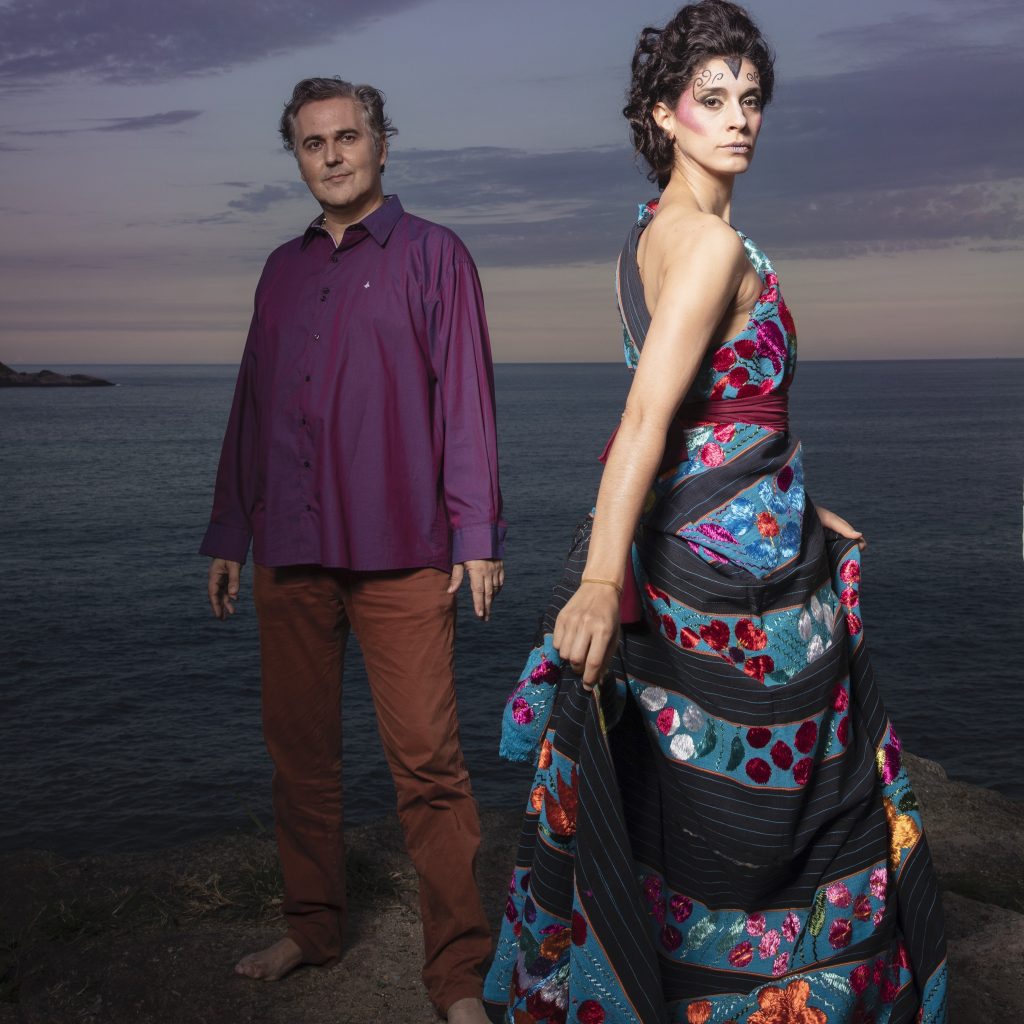
Julio cultivates a very deep friendship with a family of Indian musicians who live in the city of Vrindavan, in the state of Uttar Pradesh. One of his teachers, Anand Kumar Malik, belongs to that family. Between 2000 and 2020, Júlio brought several Indian musicians to play in Brazil, such as the well-known flutist G. S. Sachdev.
If Bianca had already had some contact with Indian music in childhood, due to her father, who came to play with an artist from India, it was Julio who reinforced the foundations of this musical bridge for the composer. Egberto Gismonti traveled to India with the musician Naná Vasconcelos still in the 70s and 80s and there he bought an Indian harmonium. Egberto even played with the famous Indian flautist Hariprasad Chaurasia. “My father is a very unique musician, he has always been inspired by the cultures he knew. The first time he went to India with Naná, he was not a deep connoisseur of Indian music, but he was very easy to play all Indian instruments. Initially he already bought a sitar. For a few years he played sitar, but never studied with teachers of Indian classical music. He played in his own way,” said Bianca.
In the list of her favorite Indian artists, Bianca quotes Ustad Rashid Khan. She ended up becoming more deeply involved in Indian culture when she started practicing and then giving yoga classes in Rio. In 2018, the two made a very special 50-day trip to India, a real pilgrimage for Bianca to dive deeper. in those waters.
On that trip, the couple won an invaluable gift: watching a Pandit Jasraj show in New Delhi. “Watching him sing was wonderful. He was 88 years old, died recently ”, recalled Júlio.
He explains that Indian classical music is called modal, which is a song that has a center, does not change several chords. “Western music has a lot of wealth in its harmonic part, of the variations. I think that this musical conversation we had at Projeto Sangam created wealth for all sides,” concluded Júlio.
“We were eager to continue, to do projects like this with other Indian musicians and with other compositions. We are cherishing the idea of joining other embassies in the project as well, ”said Bianca.
The show seems to be just beginning.
Florencia Costa is the editor of Beco da India, a Brazilian portal that covers Indian culture in South America
















